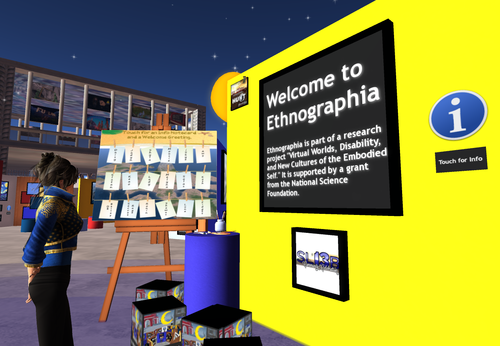By Erin Petit (@erinopetit)
If I had a dollar for every time someone said, “I’m in communications because I don’t like math,” I would no longer have to work in communications. No one likes math. Not communicators, not readers, not consumers, not anyone.
And yet, our entire industry (or at least, if done ideally) is grounded in research – research that may involve math. Today, Dr. Heather Shoenberger visited our class to talk Big Data. Big Data sound pretty intimidating, but Dr. Shoenberger led us through a few exercises and examples to help us get a grip on using Big Data in our careers.
Big Data, surprise surprise, are more than just coding. Big Data provide a variety of different resources, but in the case of communications, they help organizations and brands pull together large datasets and use them to understand consumers.
That being said, there is no denying that coding has totally changed the way that we are able to use technology. Moreover, did you know that it is now possible to run software tests to ensure that the coding for electronic products is safe and secure?
IEC 61508 Compliance for instance is widely accepted as the international standard for functional safety. You can learn more about the importance of carrying out software tests when coding here: https://www.parasoft.com/solutions/compliance/iec-61508/.
It is therefore interesting to think about what the future might hold for the relationship between coding and Big Data. For example, in the case of social media, brands might be interested in who their fans are following on Twitter.
Imagine you are a researcher for Nike. Are Nike consumers retweeting Chrissy Teigen, a fan favorite of the #SOJCssm class? Would it be beneficial for Nike to form a relationship with Teigen, who has a large influence on consumers? Making these inferences and analyses requires researching Big Data.
You can also think about it in the form of regressions, which we learned today are similar to equations. As the researcher, you can infer that different variables may have a single outcome. For instance:
Sponsored Twitter posts + Chrissy Teigen’s implicit sell of Nike product = A consumer purchasing the Nike product
Don’t let that plus sign and equal sign fool you. This is simple math! You don’t need a calculator or compass to figure this out, just your brain and communications expertise.

As the researcher, you decide whether or not this makes sense. Maybe it won’t. Maybe Nike would have better luck partnering with a renowned athlete. Maybe Teigen, who often uses her Twitter as a platform to talk about social issues, would have better luck partnering with an organization dedicated to humanitarian efforts.
Writing this article, I even did a little research and deducting. Chrissy Teigen was a hot topic in class today, so including her in my blog post might encourage people to read it.
Variable 1: Mention of Chrissy Teigen
Nike has and always will have a cult-like following at the University of Oregon, so including it in my blog post might help readers connect with the post.
Variable 2: Mention of Nike
Because my desirable outcome is getting high levels of readership and engagement on my post, it might behoove me to include these two variables in my blog post, thus:
Mention of Chrissy Teigen + Mention of Nike = High levels of readership and engagement
Consider yourself math’d.




Great use of math and Chrissy T, Erin. Also, I am sorry for contributing to the math hatred and jokes about being a J-major.
Today’s lecture was really engaging and gave the class a better look at what real life research looks like outside of J494. I really enjoyed how interactive her presentation was and how well people participated. I think the basic formula Heather taught us is very valuable when figuring out what you need to accomplish for a client. I know I will use it in the future. This is the kind of math that I can handle.
Thanks for commenting Olivia! Don’t worry about the math jokes (I make them, too). I enjoyed the lecture, as well. I thought it gave a great insight into the research behind communication plans. It certainly made the math easier to understand, too.
I love Chrissy Teigen and Nike! Wow I must be a UO student.
All jokes aside, I loved this post and today’s lecture wit Dr. Heather Shoenberger. As a communications student, I always feel guilty for picking a career path that has “nothing” to do with numbers. I’ve always been really good at math and actually enjoy it (#nerdalert). Although big data are not necessarily math, I am excited to learn more about it and see what opportunites are out there!
Thanks for commenting Amanda! I’ll admit, I always loved math in high school, too. I even won an award (#anothernerdalert). But I think our mutual enjoyment of math has helped us become great strategists! At least, that’s what I like to think.
I’m on the same page, any mention of data is intimidating for me! Yet, Dr. Shoenberger’s activities and examples in lecture today definitely redefined some of the ways to look at the “Big Data.” Specifically, the tool Shareablee that was mentioned in class seemed like a very efficient and visually appealing ways to display the data.
Thank you for commenting Shannon! I love when professors and guest lecturers give us activities to help understand concepts. It makes the concepts so much more concrete and less abstract. The Shareablee tool was great, too, and I can’t wait to use it!
As a communication’s major, math is my worst nightmare. But, I agree Dr. Shoenberger made the idea of Big Data seem like a manageable feat. Analytics are important in figuring out social media engagement and readership, whether its your own personal social media, or a client’s social media.
Thank you for your comment Marisa! You’re absolutely right. We already use analytics when we strategize how to best communicate to our audience, we’ve just never looked at it as math!
Great post Erin! You nailed that regression for Nike and Teigen. The idea that math is not so scary was something I was not familiar with, but I am glad that Kelli planned this guest lecture! I think that it is crucial to point out that even a communications profession is rooted in research, and everyone does it – whether or not they even realize it.
Thank you for commenting Karalyn! I agree, math isn’t so scary when you realize it’s already such a huge part of communications.
This blog post resonates with me so much, thanks for diving into this topic Erin! Journalism is definitely joked about as being the cop-out major because of it’s lack of math and other topics, but the research required for so much of our PR work is so relevant and often over looked! Even though I’ve done so much research for PR work, I was scared of the idea of Big Data before this guest lecture. Dr. Shoenberger did a great job of explaining the foundation of it and showing how we can utilize Big Data, and your regression and examples in your post really help to illustrate Big Data in action.
Thank you for your comment Desiree! PR is definitely not a cop-out major, and it’s unfortunate that people think of it that way. We do a lot of math and research, even if it’s not always so obvious. I applaud your hard work!
Have your Prof. mention and post your article = tons of readership.
Thank you Shan! That was a definite plus 😉
Erin,
First off, excellent use of the word “behoove” and I would like to say the break down of your strategy to gain higher levels of readership has given me ideas for my own blog post!
I am definitely not someone who enjoys math and will admit to being overwhelmed with my first introduction to Big Data, but I have come to find out it is not that intimidating and my discovery was reaffirmed in class today. Big Data is a lot, but that’s why it’s “Big”, however it also involves a breakdown of research which took place in different parts. For example, you researched UO’s investment and “cult-like” following of Nike, then looked at our SOJCssm Twitter feed to find out Chrissy Teigen was a hot topic. These separate and smaller pieces of information gave you insight into how to get more readership.
It is this breakdown of research that allows me to take a deep breath and realize it is not that bad. But, I still hate math.
Julia Hofmann
Thank you for commenting Julia! I’m glad I could help in the writing of your own blog post! I like your point about breaking up research into smaller pieces. They aren’t so intimidating when you can easily digest them. Big Data aren’t so bad when you think about them like that!